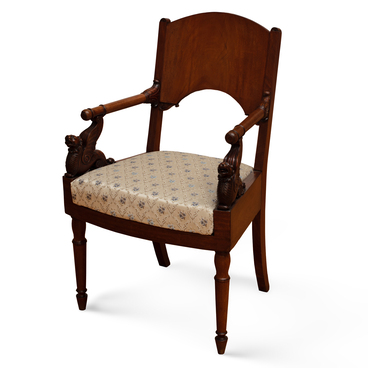The most elegant and practical way to decorate stoves and fireplaces is by using glazed ceramic tiles. In the exhibition of Taganrog Museum of Architecture and Urbanism, this technique is represented by glazed stove tiles with a white and blue color palette. One of them is this particular corner tile depicting a dark blue flowerpot against a white background.
Initially, tiles were used in Russia to decorate the façades of buildings. Being unique and difficult to produce, they emphasized the importance and status of the structures that used them for decoration. The second half of the 17th century is considered the golden age of tile production. During that period, terracotta, enameled, and polychrome relief tiles were introduced. However, such ceramic objects were still mainly used to decorate the façades and interiors of such buildings as churches.
Gradually, large-scale ceramic production was implemented, leading to the widespread use of glazed tiles in households. Tiled stoves began to appear in Russian interiors. Tiles protected the stove, prolonged its life, and increased its efficiency by retaining heat longer.
The main difference between glazed tiles and ordinary facing tiles was that glaze tiles had a box-like lug, the so-called “rumpa” on the reverse side. This created an air layer between the brickwork and the tile, which ensured even heat distribution over the entire surface of the stove walls. This was achieved by the holes in the rumpa which prevented overheating.

